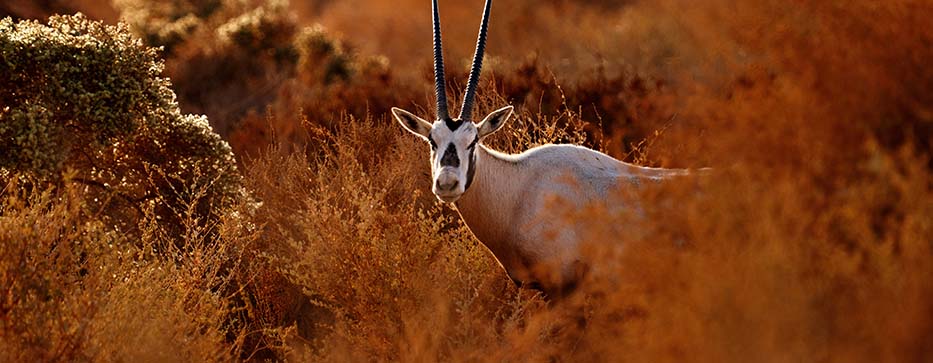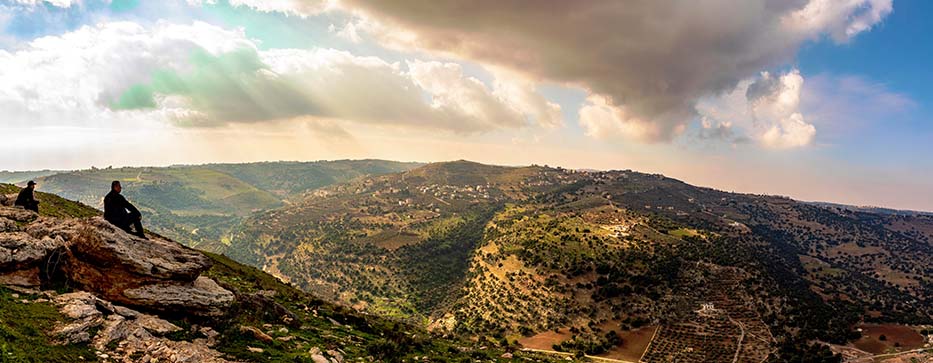What every nature lover is looking for in his travels is to get in touch with ecosystems that he is not used to seeing in his day to day. And if you can find several of them on the same trip, all the better. That is precisely what can be done in this country: nature of Jordan It is surprisingly varied, especially considering its small territory. And the country has been able to identify this strength, successfully exploiting ecotourism. On this page we tell you everything you need to know about the natural attractions that are located in Jordanian territory.
As we also pointed out on the
geography
page, in Jordan there are clearly three major natural regions or ecoregions:
To these terrestrial ecoregions can be added the Gulf of Aqaba, whose marine biodiversity occupies a prominent place in the nature of Jordan: just submerge your head underwater to start discovering a world full of richness and color starring more than a thousand types of fish and hundreds of species of corals.
And there’s good news for travelers, especially those more interested in nature: Jordan is a relatively small country and these ecoregions can be easily integrated into any multi-day circuit.

It is a very unique space because it is in the middle of the geological fault, caused by the fracture of the African tectonic plate and the Arabian plate: it is what is known as the Great Rift Valley, which goes from southern Syria to East Africa. This separation led to the emergence of the Red Sea to the south, but also the three spaces into which the Jordan Valley can be divided:
The Jordan Valley is one of the most unique spaces of nature in Jordan Because it preserves a permanent, humid and fertile body of fresh water in the north. The Jordan River rises in the Lebanese mountains and, after overcoming the Sea of Galilee (Lake Tiberias on Israeli soil), joins the Yarmouk River to serve as a border between Jordan and Israel, emptying into the Dead Sea. It feeds mainly on rainwater and some rivers or wadis in the area, such as the aforementioned Yarmouk.
One of its most unique characteristics is its negative altitude: it runs several hundred meters below sea level, reaching its minimum point in the Dead Sea, less than -400 meters above sea level.
With regard to flora, fire trees and tamarisks stand out, while the most representative species of its fauna are birds, such as the kingfisher, the suimanga or the Sinai bullfinch, considered the national bird of Jordan. More complicated is to see otters, in danger of extinction.
In contrast, in Wadi Araba, south of the Dead Sea, the valley is totally arid. However, scientific studies and evidence collected on the ground show that thousands of years ago, the entire area had a humid ecosystem, with a flora and fauna very different from the current one (rhinos, lions, elephants …). But all this vanished with the evaporation of the large body of water that covered the area, a problem that seems to continue to exist in the Jordan Valley, to which are added the transfers for human consumption.

From the Jordan Valley, on a steep climb through rocky gorges, you reach the plateau and mountainous areas of the eastern bank. This area concentrates most of the Jordanian population in cities, and it makes sense: it is the friendliest area from the environmental point of view, with wooded areas and a more temperate climate.
Here, the nature of Jordan is tinged with a certain greenery, mixed with other colors thanks to the pines of Aleppo, strawberry trees, oaks, wild blooms in spring (poppies, daisies, black lilies, etc.), as well as species cultivated by humans: olive trees, vineyards or fig trees.
The fauna is also more diverse here, with the presence of wild boars, martens, porcupines, African lynx (caracals) and ibex, the latter in danger of extinction and subject to an ambitious program of conservation and reintroduction into the nature of Jordan.
Approximately 95% of the country is desert, occupying mainly the center, east and south of the country. Here, the interest is aroused by its rock formations, mainly sandstone and granite, which in some cases give us dreamy formations and landscapes, as in Wadi Rum.
But there is also room for some oases that seem to emerge miraculously, such as Azraq, where the biodiversity of flora and fauna is greater: reedbeds and wetlands that are home to almost 300 species of migratory birds, such as egrets and herons. There is also the presence of amphibians such as toads and mammals such as hares, desert foxes, jackals and wolves.
Beyond the few desert oases, the wastelands are simply populated by reptiles such as the Sinai agama or the chameleon, as well as about thirty species of snakes. Among the invertebrates, the yellow Palestinian scorpion stands out.